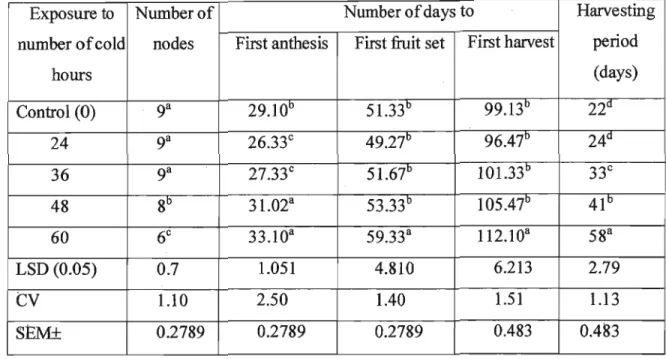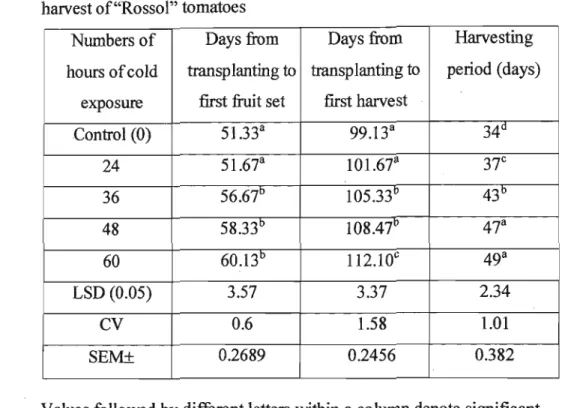Effects of cold exposure on plant height and internode length Effects of cold exposure on time of first fruit set and first harvest Effects of cold exposure on yield attributes. OF COLD EXPOSURE DURING FIRST FRUIT SETTING ON MORPHOLOGICAL AND PHENOLOGICAL CHARACTERISTICS Effects of cold exposure on plant height and internode length.
LIST OF TABLES
Page Table 15 Effect of soil K fertilization on total yield per plant, number of fruits per plant, fruit size and percentage of marketable fruit of "Rossol" tomatoes under.
LIST OF ABBREVIATIONS
CHAPTER ONE
GENERAL INTRODUCTION
- mSTORICAL BACKGROUND OF TOMATO PRODUCTION
- WORLD TOMATO PRODUCTION
- TOMATO PRODUCTION IN ERITREA
- TOMATO PLANT FORM AND CULTURE
- TOMATO PLANT FORMS
- CULTURE
- PROBLEM STATEMENT
- OBJECTIVES
However, most of this production is based in the Northern Hemisphere, where 91% of the world's crop is produced between July and December (FAO, 2002). The balance of the fertilizer, i.e. the relative content of nitrogen, phosphorus, potassium and other elements has a significant influence on the growth of the plant and the quality of the fruit.
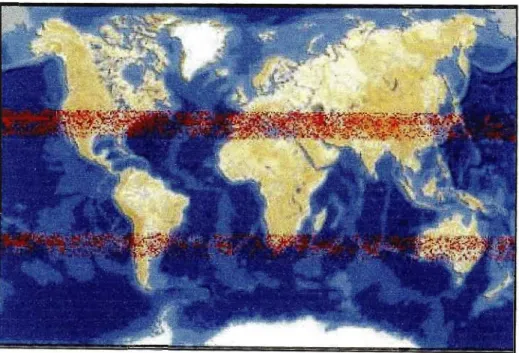
EFFECTS OF LOW TEMPERATURE ON THE DURATION OF DEVELOPMENTAL STAGES OF Lycopersicon esculentum var
ROSSOL
INTRODUCTION
- INHERITED PLANT FACTORS
- CULTIVAR
- EFFECT OF ENVIRONMENTAL CONDITIONS ON TOMATO PLANT DEVELOPMENT AND GROWTH STAGES
- AIM OF RESEARCH
Solar radiation also affects the number of leaves produced before the appearance of the first inflorescence. Adverse temperatures can prevent fruit set in a number of ways, affecting various developmental stages of the flower and its parts, as well as the pollination and fertilization process (Rick, 1978; Picken, 1984).
MATERIALS AND METHODS
- LOCATION AND CLIMATE OF EXPERIMENTAL SITE
- FLANT MATERIAL
- STANDARD MANAGEMENT
- EXPERIMENTAL LAYOUT
- COLD APPLICATION
- STATISTICAL ANALYSIS
Therefore, they were moved from the greenhouse to the cold room for two, three, four, or five consecutive nights and returned to the greenhouse in the morning for the time of day (7:00 a.m. to 7:00 p.m.). The second group was exposed to cold when the first flower of the first fruit was visibly mature (first flowering) (37 days after sowing). Similar to the first group (vegetative stage), these plants were divided into five groups and exposed from zero to 60 cold hours.
The third group was exposed to different cold treatments as soon as the first fruits were visible (phase of first fruit formation) (51 days after sowing). Plant height was measured immediately after exposure to low temperature and then every two weeks until maturity (appearance of red ripeness) of the first fruit. Plant height was determined with a ruler by measuring the distance from the cotyledons to the top of the plant.
Similarly, the internode length of the plants was measured by determining the distance from the newly emerged leaf to the preceding leaf.
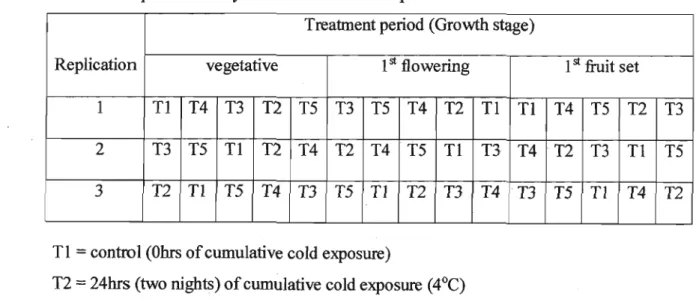
RESULTS
- EFFECTS OF COLD EXPOSURE DURING JUVENILE PHASE ON MORPHOLOGICAL AND PHENOLOGICAL CHARACTERISTICS
- EFFECTS OF COLD EXPOSURE ON NODES BELOW FIRST INFLORESCENCE
- EFFECTS OF COLD EXPOSURE ON TIME TO FIRST ANTBESIS
- EFFECTS OF COLD EXPOSURE ON TIME TO FIRST FRUIT SET AND FIRST HARVEST
- EFFECTS OF COLD EXPOSURE ON YIELD ATTRIBUTES
- EFFECTS OF COLD EXPOSURE DURING APPEARANCE OF FIRST
- EFFECTS OF COLD EXPOSURE ON PLANT HEIGHT AND INTERNODE LENGTH
- EFFECTS OF COLD EXPOSURE ON TIME TO FIRST FRUIT SET AND FIRST HARVEST
- EFFECTS OF COLD EXPOSURE ON YIELD ATTRIBUTES
- EFFECTS OF COLD EXPOSURE DURING FIRST FRUIT SET ON MORPHOLOGICAL AND PHENOLOGICAL CHARACTERISTICS
- EFFECTS OF COLD EXPOSURE ON PLANT HEIGHT AND INTERNODE LENGTH
- EFFECTS OF COLD EXPOSURE ON TIME TO FIRST HARVEST AND HARVESTING PERIOD
- EFFECT OF COLD EXPOSURE ON YIELD ATTRIBUTES
Effect of cold exposure carried out at the juvenile stage on the length of internodes of tomato ``Rossol'' at first harvest. The effect of cold exposure at first flowering on the height of ``Rossol'' tomato plants at first harvest. The interaction between hours of cold exposure and internode length at harvest was not significant.
5 Effect of cold exposure at first flowering on internode length of ``Rossol'' tomatoes at first harvest. Of the phenological variables determined, the time to first fruit set was the one most affected by the duration of cold exposure. Number of hours Yield Number of fruit size Marketable fruit of cold stress (g/plant) fruit/plant (g).
6 Effect of hours of cold exposure during first fruit set on plant height of "Rossol".
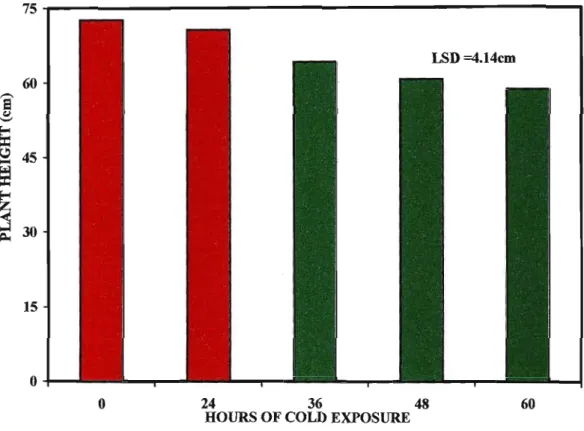
DISCUSSION AND CONCLUSIONS
- LOW TEMPERATURE EXPOSURE DURING THE JUVENILE STAGE
- LOW TEMPERATURE EXPOSURE DURING FIRST FLOWERING
- LOW TEMPERATURE EXPOSURE DURING FRIDT SET
A brief exposure to cold during the night during the vegetative growth phase of the tomato can increase the number of fruits on the first cluster, allowing higher early yield (Wittwer and Honma, 1979). This number (six leaves below the first inflorescence) was fairly constant up to 36 hours of cold exposure, but increased as cold exposure was increased after 36 hours. The results obtained confirm this finding in the sense that cold exposure of "Rossol" tomatoes during the first flowering phase, when new flowers are still being initiated, resulted in dwarf plants (Fig. 4) with shorter intemodes (Fig. 5), delayed flower development , fruit set and ripeness (Table 4), and lower yield and poorer fruit quality (Table 5) - depending, however, on the duration of cold exposure.
Exposure to cold for up to 48 hours had no effect on the number of fruits per plant, but extended the cold hours even further (to the equivalent or to more than 60 hours). In our study, cold exposure during first fruit set reduced plant height to the same extent independently of the duration of cold exposure, while internode length was unaffected. During the juvenile phase, cold exposure of tomato plants for 24 and 36 hours does not negatively affect most morphological and phenological parameters.
Although prolonged cold exposure (for more than 36 hours) reduces both the yield and the quality of the products, plants exposed to cold in the juvenile stage can recover quickly and ultimately do well.
CHAPTER THREE
EFFECTS OF SOIL POTASSIUM LEVEL AND MULCIDNG ON COLD TOLERANCE OF Lycopersicon esculentum var. ROSSOL
INTRODUCTION
- RESPONSE OF TOMATO TO K FERTILIZATION
- ROLE OF K IN TOMATO
- EFFECfS OF K OVER- AND UNDERSUPPLY ON TOMATO GROWTH AND DEVELOPMENT
- MULCHING OF TOMATO
- SPECIAL EFFECTS OF MULCIDNG
- DISADVANTAGES OF MULCHING
- AIM OF RESEARCH
According to these findings, optimal K nutrition results in a higher concentration of starch in the plant and in improved crop quality. ATP is required for all synthetic processes of tomato metabolism, resulting in the production of carbohydrates, proteins and lipids, as well as secondary metabolites. If fruits are present on the tomato plant under poor conditions, much of the potassium in the plant is transferred to it and the entire plant's demand for potassium will then exceed supply.
In addition to discolouration of the leaves and the formation of necrotic areas, potassium deficiency results in a reduction in yield and in the percentage of salable fruit (Usherwood, 1985). Heavy soil warms up more slowly and retains moisture better than light soil, and therefore should be covered later in the season. Tomatoes respond most favorably to cover crops applied early in the season (Rubeiz and Freiwat, 1995), as this allows the development of an extensive root system beneath the protective cover.
Dark colored mulches can absorb solar radiation during the day and radiate heat in the evening.
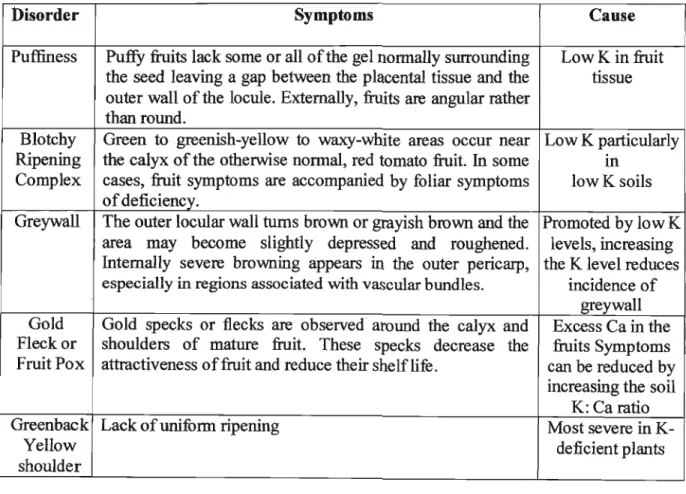
MATERIALS AND METHODS
- LOCATION OF EXPERIMENTAL SITE
- PLANT MATERIAL
- STANDARD MANAGEMENT
- EXPERIMENTAL DESIGN AND LAYOUT
- APPLICATION OF POTASSIUM
- PLANT MATERIAL
- STANDARD MANAGEMENT
- APPLICATI~N 0F MULCH
- EXPERIMENTAL DESIGN AND LAYOUT
- DETERMINATION OF MORPHOLOGICAL, PHENOLOGICAL AND PHYSIOCHEMICAL CHARACTERISTICS
- MORPHOLOGICAL AND PHENOLOGICAL CHARACTERISTICS
- PHYSIOCHEMICAL CHARACTERISTICS
- STATISTICAL ANALYSIS
Air temperature in the tunnel during the seed germination and early growth period until transplanting ranged from 14 to 29.5°C. The plants were kept in the tunnel until they were fully established (23 days) and 64 vigorous and healthy seedlings were selected for transplanting thereafter. K2S04 was given to tomato plants to meet the sulfur requirements, to minimize the effect of nitrogen and to maintain a high K availability in the soil.
Seedlings were allowed to grow to the stage of two true leaves in the tunnel and transplanted to the field at the Ukulinga Research Fann on 24 May 2002. The relative humidity is higher in the rainy months, while the weather is drier in the winter. Seedlings were grown in composted pine bark and transplanted to the field at Ukulinga Research Station.
Seedlings were transplanted into 1 (1) cm diameter h~les in a single row in the center of mulched and unmulched beds.
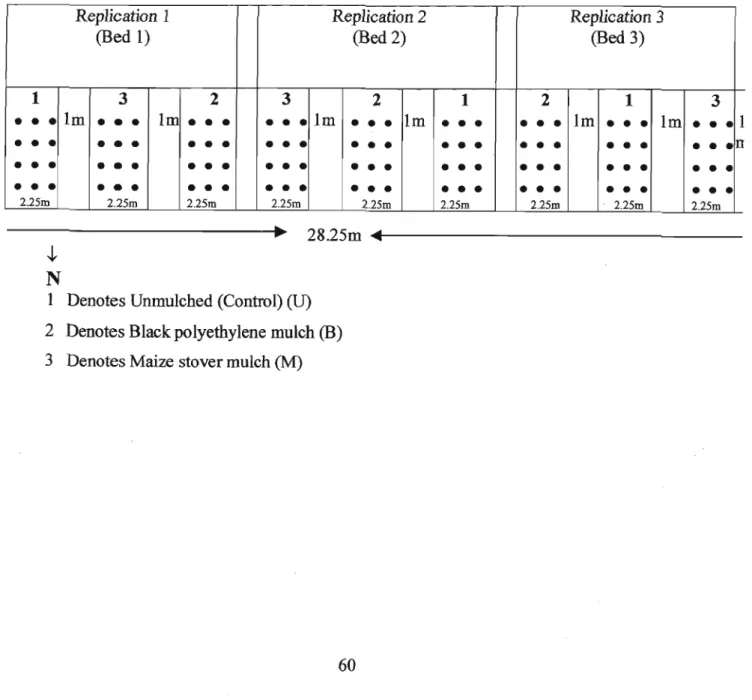
RESULTS
- EFFECTS OF VARYING POTASSIUM FERTILIZATION LEVELS ON COLD TOLERANCE OF Lycopersicon esculentum var. ROSSOL
- EFFECTS OF VARYING POTASSIUM FERTILIZATION LEVELS ON PLANT HEIGHT AND INTERNODE LENGTH
- EFFECTS OF VARYING POTASSIUM FERTILIZATION LEVELS ON TIME TO FIRST ANTHESIS, FIRST FRUIT SET AND FIRST MATURE
- EFFECTS OF VARYING POTASSIUM FERTILIZATION LEVELS ON YIELD ATTRIBUTES
- EFFECTS OF VARYING POTASSIUM FERTll..IZATION LEVELS ON TOTAL CAROTENOID AND CHLOROPHYLL CONCENTRATIONS
- EFFECTS OF MULCHING ON PLANT HEIGHT, INTERNODE LENGTH AND NUMBER OF NODES BELOW FIRST INFLORESCENCE
- EFFECTS OF MULCHING ON NUMBER OF DAYS TO FIRST ANTHESIS, FIRST FRUIT SET AND FIRST HARVEST
- EFFECTS OF MULCIDNG ON YIELD PER PLANT, NUMBER OF
Variation in soil K fertilization level did not have a significant effect (p < 0.05), at any site, on the number of nodules during the first inflorescence (Table 14). However, plants kept in the greenhouse tended to have a higher number of nodes during the first inflorescence than those grown under field conditions (Table 14). Plants supplied with 100% RKLand 150% RKL gave the highest yield per plant under greenhouse conditions (Table 15).
Plants grown under greenhouse conditions tended to have a higher proportion of marketable fruit than those grown in the field (shade cover) (Table 15). Furthermore, varying K fertilization levels had a significant effect on the percentage of marketable fruit under greenhouse and field conditions. Table 19: Effects of mulching on plant height, internode length and number of nodes under first flowering of ``Rossol'' tomatoes.
Although the number of fruits per plant was not significantly different between mulch treatments, control plants had a significantly lower number of fruits compared to plants of the two mulch treatments.
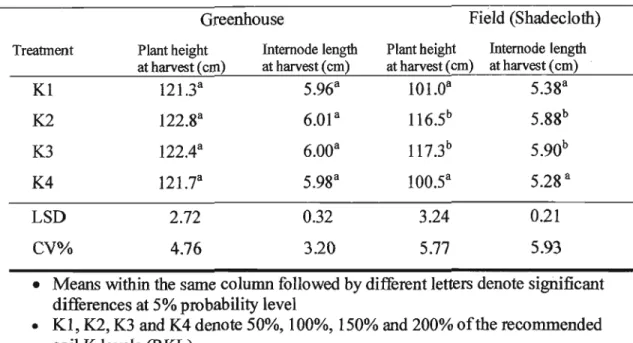
DISCUSSION AND CONCLUSIONS
The findings from this experiment suggest that increasing the K level to 150% of the RKL results in plants with the highest cold tolerance, as determined by an increase in yield per plant. Mulching a late planting with corn stover reduces plant growth (plant height and internode length) compared to unmulched soil (Table 19). Similarly, corn stalk mulching resulted in significantly higher yield per plant, number of fruits per plant, fruit size per plant, and percentage of marketable fruits than those grown in bare soil (Table 21).
Furthermore, yield per plant increased significantly compared to those grown either in bare soil or under maize stover (Table 21). It appears that the improved hydrothermal regime under black plastic led to an earlier and better leaf blade development throughout tomato plant growth. Although the number of fruits per plant and fruit size did not differ significantly between the two mulch treatments, both corn stover and black plastic mulch showed significant improvement in these characteristics compared to the control. Plants grown under black plastic mulch did not differ significantly from those grown with corn stover in this aspect, supporting the assumption that avoiding contact with the soil is the main reason for the increased percentage of marketable fruit.
This study shows that both maize mulch and black plastic mulch increase yield and yield attributes.
OUTLOOK
The role of potassium in photosynthesis and respiration. In: The Role of Potassium in Agriculture, American Society of Agronomy, Crop Science Society of America and Soil Science Society of America, Madison, WI. I The effect of temperature and light intensity on the growth of the shoot tip and leaf premordia. In: The Role of Potassium in Agriculture, American Society of Agronomy, Crop Science Society of America and Soil Science Society of America, Madison, WI.
The role of potassium in the plant with emphasis on stress conditions (water, temperature, salinity). Proceedings of the Workshop on Role of Potassium in Improving Fertilizer Efficiency, NFDC, Islamabad.Pp. Proceedings of the Regional Workshop for the International Potash Institute held in Bornova, Izmir, Turkey, 26-30 May 1997.
Germination and germination responses of tomato to low temperatures. Proceedings of The American Society of Horticultural Science.
